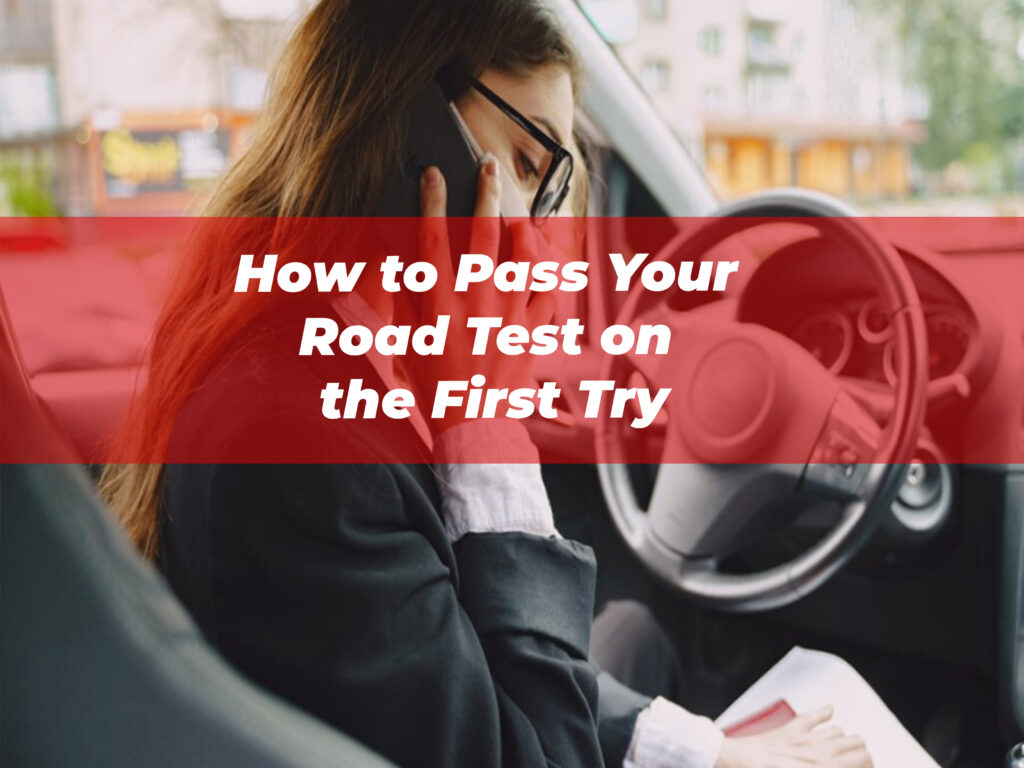Pass Your Road Test your road test on the first attempt is a major milestone in anyone’s life. Driving opens the doors to independence, convenience, and new opportunities. But the thought of sitting behind the wheel with an examiner scrutinizing your every move? That can be nerve-wracking! The secret to succeeding, though, lies in preparation. With the right mindset, practice, and knowledge, you can ace your road test without having to return for a second attempt.
This guide will walk you through everything you need to know—from preparation tips and test day strategies to overcoming nerves. Follow these steps to build confidence and ensure you’re ready when the big day arrives.
Preparing for Pass Your Road Test
1. Understand the Test Format
Before you even think about scheduling your Pass Your Road Test, it’s important to understand what the test will entail. Each state or country has specific requirements for road tests that examine your ability to control a vehicle safely and follow traffic rules. Key elements of most road tests include:
- Starting the car properly
- Performing turns (including difficult ones like three-point or U-turns)
- Parallel parking
- Merging into traffic
- Following traffic signs and signals
- Demonstrating proper lane discipline and speed control
Visit your local DMV (or its equivalent) website to familiarize yourself with the test components. Knowing what to expect will prevent surprises on test day and allow you to practice accordingly.

2. Enroll in a Professional Driving Course
If you’re new behind the wheel, taking Pass Your Road Test with a certified instructor can make a world of difference. Professional instructors are experienced at teaching road test techniques and are familiar with what driving examiners look for. They’ll also guide you on proper use of mirrors, signaling, and space management, which are essential for passing.
3. Practice, Practice, Practice!
Even if you’re confident in your driving skills, practice is non-negotiable. Spend time behind the wheel in different settings, such as urban areas, highways, and quieter neighborhoods. Repetition builds muscle memory, which will help you perform tasks like parking or merging more smoothly during your test.
Focus on these areas during your practice sessions:
- Smooth acceleration and braking
- Proper use of turn signals
- Maintaining a safe following distance
- Checking blind spots regularly
If possible, Pass Your Road Test on the exact route your test might follow. Some testing centers allow candidates to familiarize themselves with the area ahead of time. Taking advantage of this can give you an edge.
4. Master Parallel Parking
Parallel parking is often the most feared part of the road test. But with the right technique, it’s not as difficult as it seems. Here’s a simple method to follow while practicing parallel parking:
- Align your car parallel to the parked car ahead of the space.
- Turn your steering wheel fully toward the curb and reverse until your car is at a 45-degree angle.
- Straighten the wheel and continue reversing until your car is in the spot.
- Turn your steering wheel fully in the opposite Pass Your Road Test and pull in.
Practice this maneuver repeatedly until it feels natural.
5. Study Traffic Laws and Road Signs
Driving isn’t just about handling the car; it’s about following the rules. Take time to thoroughly review your region’s traffic laws and road signs. You’ll need to demonstrate understanding of right-of-way rules, speed limits, and lane markings during your road test. Being well-versed in these rules will not only help you pass but will also make you a safer driver.
Getting Yourself Test-Ready
6. Prepare Your Vehicle
If you’re taking the test with your own Pass Your Road Test, make sure it’s in good condition and meets all necessary requirements. Check that these elements are functioning properly:
- Brakes and brake lights
- Turn signals
- Mirrors
- Windshield wipers
- Tires
Clean the interior of your car, too. Having a clutter-free vehicle shows your examiner that you’re serious about safety and organization.
7. Take Mock Road Tests
Simulating the test environment can greatly reduce your anxiety. Have a friend or instructor act as the examiner and run through the entire road test as if it’s the real thing. Time yourself and ask for feedback after each attempt. Pay close attention to areas where you struggle, and focus on improving those before the actual test.
8. Practice Defensive Driving
Defensive Pass Your Road Test is about being aware of your surroundings and anticipating potential hazards. This skill is highly valued by examiners. Simple steps like checking intersections for pedestrians, scanning mirrors frequently, and maintaining a safe following distance can demonstrate your commitment to safety.
9. Manage Your Nerves
Nervousness is natural, but it can lead to mistakes during your test. To calm your mind:
- Practice deep breathing techniques.
- Visualize yourself acing the test.
- Remind yourself that you’ve prepared thoroughly.
It can also help to schedule your test for a time when traffic is light, like mid-morning or early afternoon, to create a more relaxed environment.
10. Get Plenty of Rest
A good night’s sleep before the Pass Your Road Test is crucial. Fatigue can impair your focus, reflexes, and judgment, so make rest a priority in the days leading up to the test.
What to Expect on Test Day
11. Arrive Early and Be Calm
Aim to arrive at the testing center 15-30 minutes ahead of your appointment. This will give you time to settle in and complete any paperwork without feeling rushed. Remember, the examiner is not looking to fail you; they simply want to ensure you’re ready to drive safely.
12. Follow Instructions Precisely
Listening skills are critical during your Pass Your Road Test. Pay close attention to the examiner’s directions and carry them out calmly. If you’re unsure of any instructions, don’t hesitate to ask for clarification.
13. Demonstrate Confidence
Even if you feel nervous, try to project confidence while Pass Your Road Test. Sit upright, keep both hands firmly on the wheel, and avoid sudden or jerky movements. Confidence also means being decisive. For example, if it’s your turn at a four-way stop, don’t hesitate; proceed when it’s safe to do so.
14. Don’t Sweat Minor Mistakes
No one drives perfectly, and minor mistakes are unlikely to fail you. The key is to remain composed and not dwell on small errors. For example, if you forget to signal during a turn, simply correct the mistake and continue driving safely.
Common Mistakes to Avoid
The best preparation includes knowing what not to do. Here are some common road test mistakes and how to avoid them:
- Rolling through stop signs: Always come to a complete stop and count “one, two, three” in your head before proceeding.
- Driving too fast or slow: Adjust your speed to match road conditions and adhere to posted speed limits. Driving too cautiously can also be penalized.
- Failing to check mirrors and blind spots: Get into the habit of scanning your mirrors frequently and checking over your shoulder when changing lanes.
- Improper lane use: Stay in your lane and avoid cutting corners Pass Your Road Test turns.
Celebrating Your Success
Once you’ve passed your Pass Your Road Test, celebrate the accomplishment! You’ve worked hard to earn your license, and it’s a huge step toward independence. Moving forward, make safety your top priority. Practice what you’ve learned and continue honing your skills as a responsible Pass Your Road Test.
Final Thoughts
Passing your road test on the first try is Pass Your Road Test achievable with the right preparation and mindset. Remember, confidence comes from practice and familiarity, so spend plenty of time behind the wheel before your test day. Focus on safe driving habits, pay attention to the examiner’s instructions, and stay relaxed. Following these tips will greatly increase your chances of success.
Now it’s time to put what you’ve learned into action. Schedule your road test, practice diligently, and step into the driver’s seat with Pass Your Road Test.










